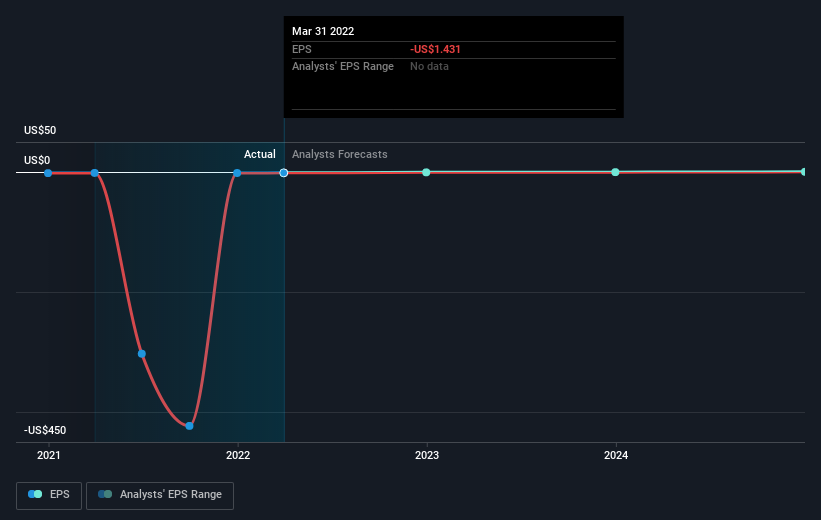The Real Good Food Company, Inc. (NASDAQ:RGF) Is Expected To Breakeven In The Near Future
We feel now is a pretty good time to analyse The Real Good Food Company, Inc.'s (NASDAQ:RGF) business as it appears the company may be on the cusp of a considerable accomplishment. The Real Good Food Company, Inc., through its subsidiary, Real Good Foods, LLC operates as a health and wellness focused frozen food company in the United States. The US$169m market-cap company’s loss lessened since it announced a US$10m loss in the full financial year, compared to the latest trailing-twelve-month loss of US$7.9m, as it approaches breakeven. Many investors are wondering about the rate at which Real Good Food Company will turn a profit, with the big question being “when will the company breakeven?” We've put together a brief outline of industry analyst expectations for the company, its year of breakeven and its implied growth rate.
View our latest analysis for Real Good Food Company
Real Good Food Company is bordering on breakeven, according to the 4 American Food analysts. They anticipate the company to incur a final loss in 2023, before generating positive profits of US$9.0m in 2024. So, the company is predicted to breakeven approximately 2 years from today. In order to meet this breakeven date, we calculated the rate at which the company must grow year-on-year. It turns out an average annual growth rate of 81% is expected, which is extremely buoyant. If this rate turns out to be too aggressive, the company may become profitable much later than analysts predict.
Given this is a high-level overview, we won’t go into details of Real Good Food Company's upcoming projects, however, keep in mind that typically a high growth rate is not out of the ordinary, particularly when a company is in a period of investment.
Before we wrap up, there’s one issue worth mentioning. Real Good Food Company currently has a debt-to-equity ratio of 150%. Generally, the rule of thumb is debt shouldn’t exceed 40% of your equity, which in this case, the company has significantly overshot. A higher level of debt requires more stringent capital management which increases the risk in investing in the loss-making company.
Next Steps:
There are key fundamentals of Real Good Food Company which are not covered in this article, but we must stress again that this is merely a basic overview. For a more comprehensive look at Real Good Food Company, take a look at Real Good Food Company's company page on Simply Wall St. We've also compiled a list of pertinent aspects you should further examine:
Historical Track Record: What has Real Good Food Company's performance been like over the past? Go into more detail in the past track record analysis and take a look at the free visual representations of our analysis for more clarity.
Management Team: An experienced management team on the helm increases our confidence in the business – take a look at who sits on Real Good Food Company's board and the CEO’s background.
Other High-Performing Stocks: Are there other stocks that provide better prospects with proven track records? Explore our free list of these great stocks here.
Have feedback on this article? Concerned about the content? Get in touch with us directly. Alternatively, email editorial-team (at) simplywallst.com.
This article by Simply Wall St is general in nature. We provide commentary based on historical data and analyst forecasts only using an unbiased methodology and our articles are not intended to be financial advice. It does not constitute a recommendation to buy or sell any stock, and does not take account of your objectives, or your financial situation. We aim to bring you long-term focused analysis driven by fundamental data. Note that our analysis may not factor in the latest price-sensitive company announcements or qualitative material. Simply Wall St has no position in any stocks mentioned.
Join A Paid User Research Session
You’ll receive a US$30 Amazon Gift card for 1 hour of your time while helping us build better investing tools for the individual investors like yourself. Sign up here

 Yahoo Lifestyle
Yahoo Lifestyle 

